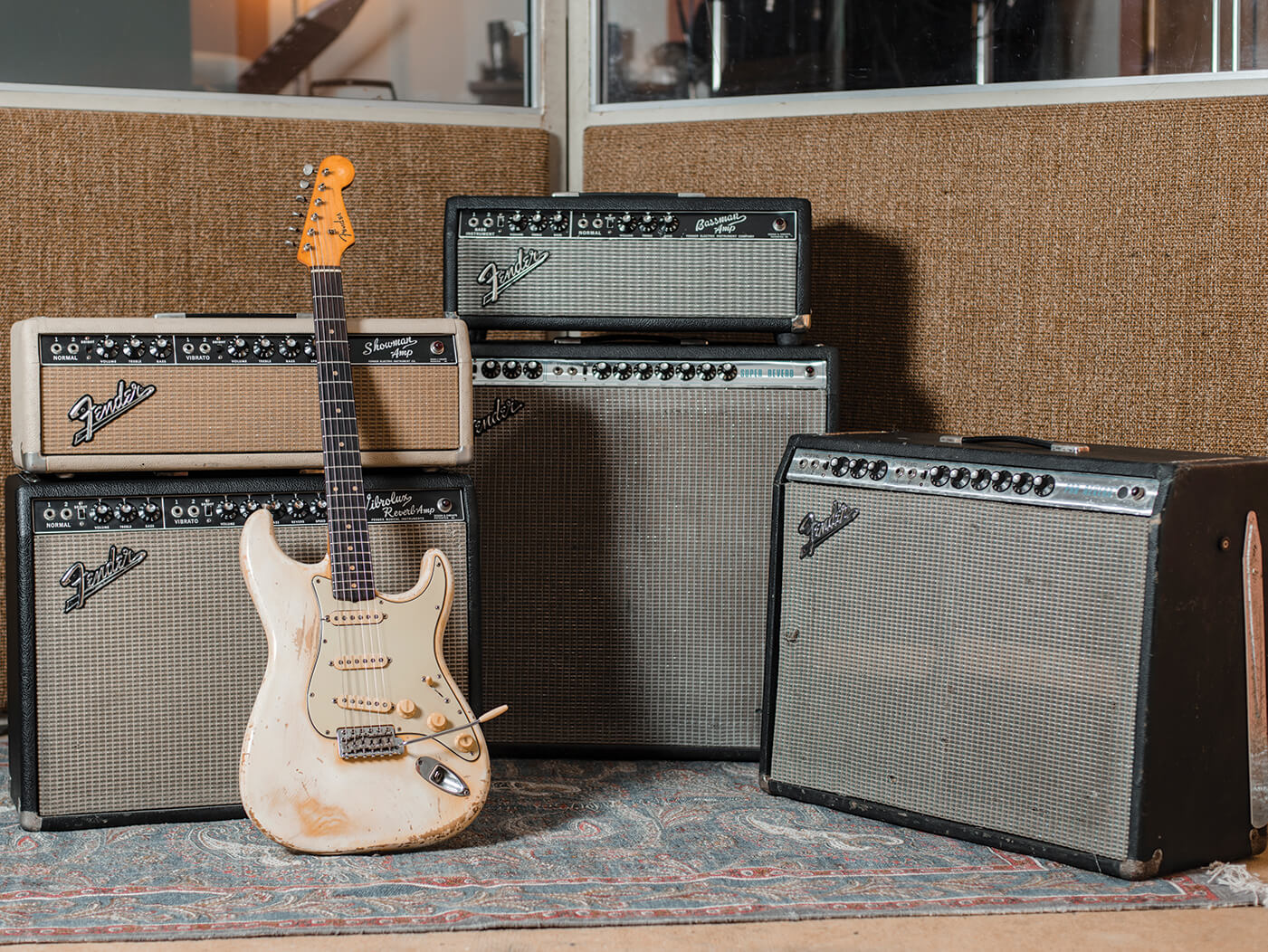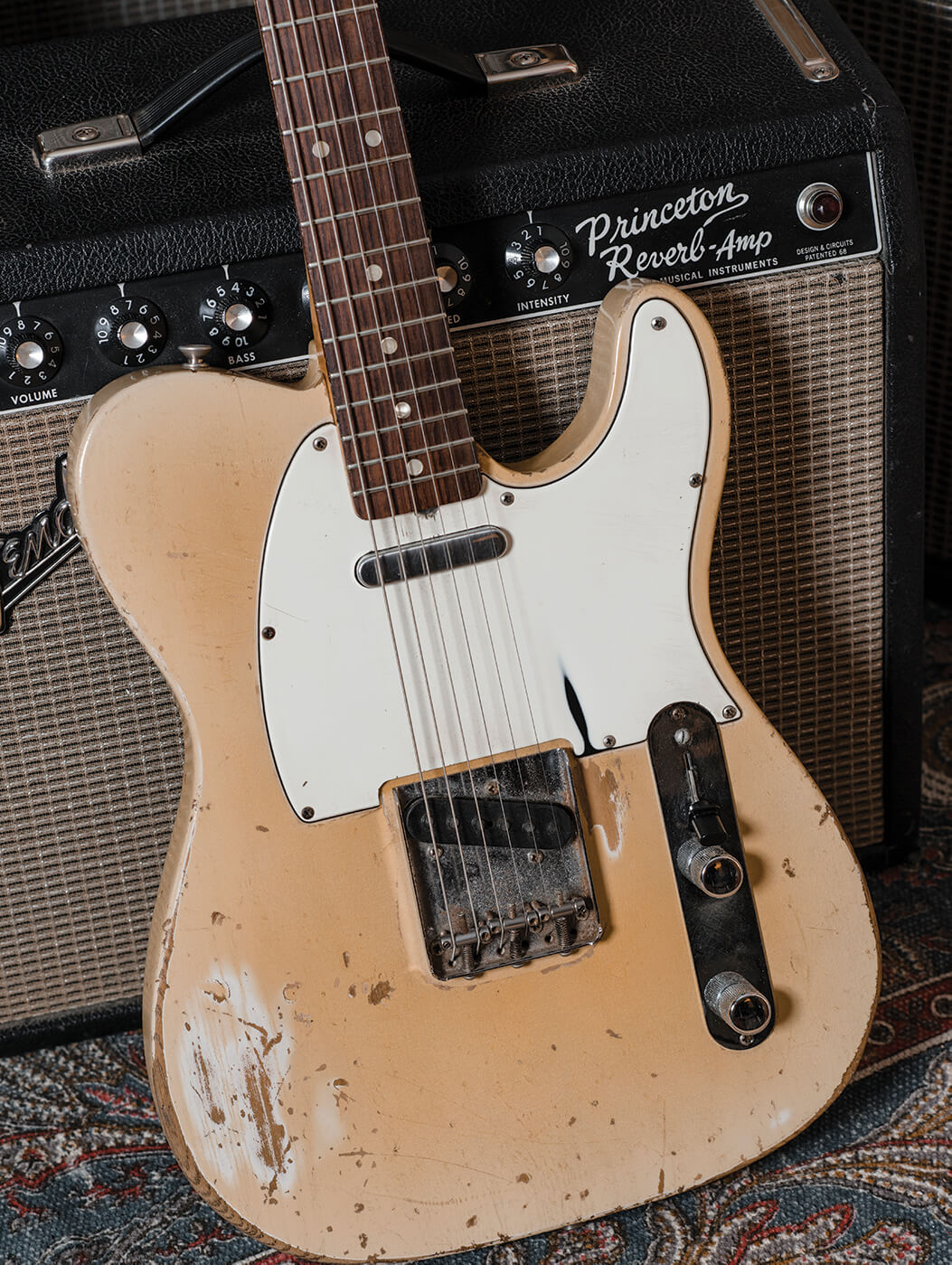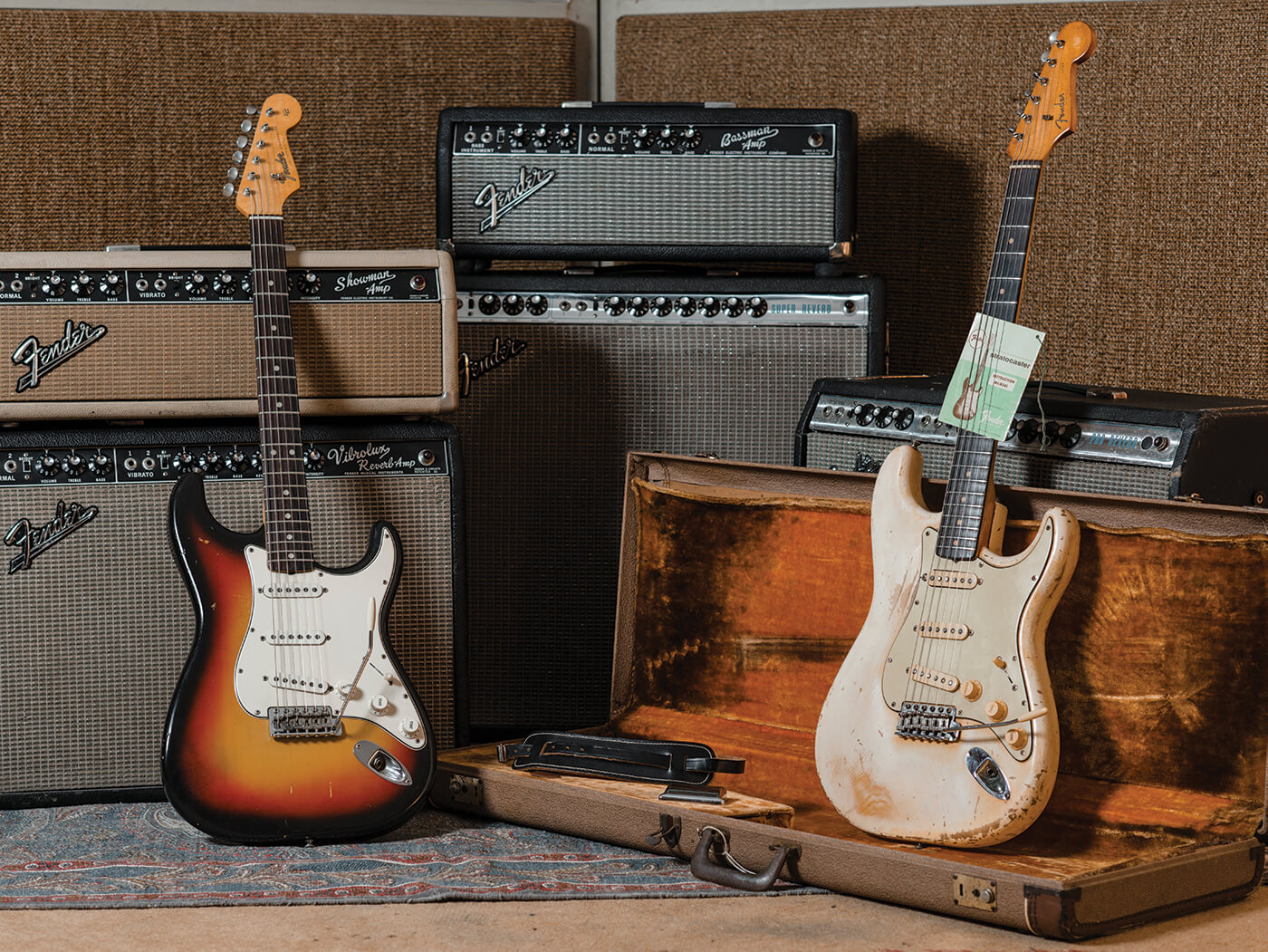Private Collection: Mark Pontin has vintage mojo
Vintage guitars can be beyond the reach of hard-working musicians, yet blues-rock guitarist Mark Pontin manages to assemble a fine collection of player-grade gear.
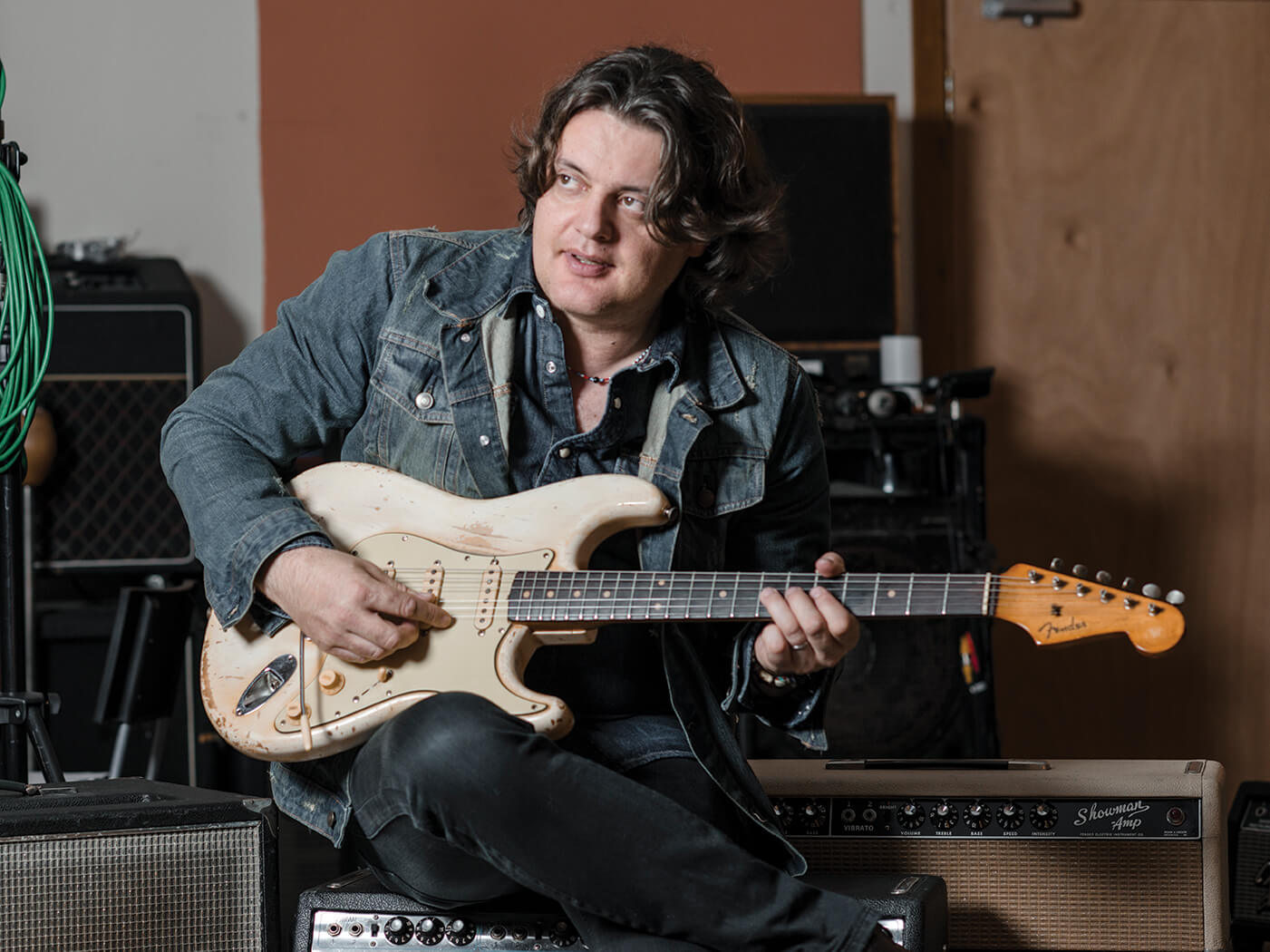
All images: Eleanor Jane
Mark Pontin is an old friend of this writer, and it’s been wonderful to watch him go from holding down a day job and gigging whenever he could, to fulfilling his lifelong ambition of being a professional musician. Even back in the day, he was a monster player, but Mark’s musicianship has progressed considerably, while his taste in gear has evolved from powerful amps and reissue guitars to lower-power vintage amps and instruments.
Mark was seemingly always destined to be a guitarist. “My mum played a Spanish guitar when I was little,” he recalls. “She would strum it for me and my little brother and sing songs. I remember being fascinated by that. When I was 11, she bought me a Spanish guitar and I spent the next five years hassling her to teach me. Eventually, I realised it would be better if I taught myself.
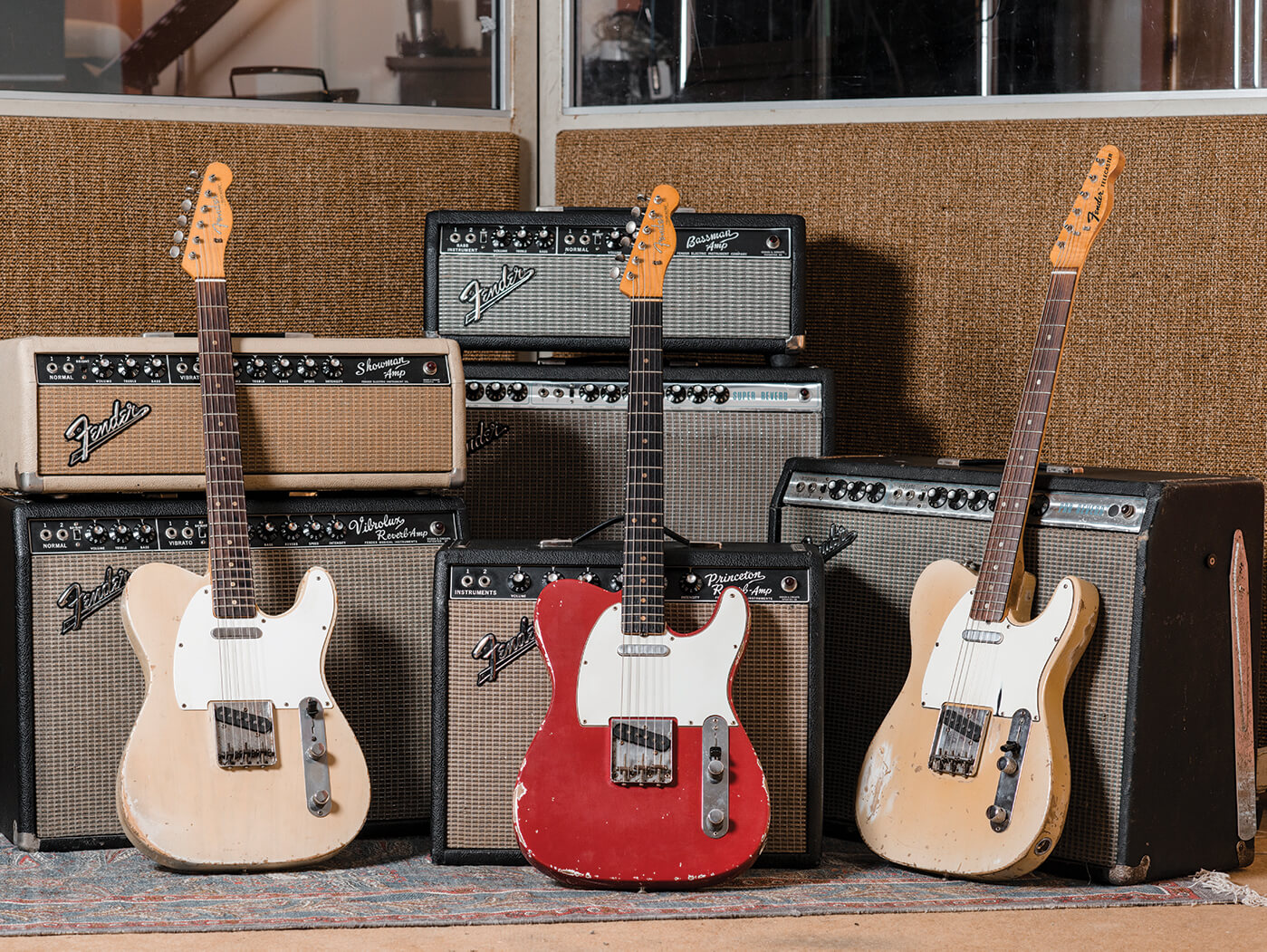
“Our parents had split up and every Christmas, my father would take us to Cardiff and ask what we wanted. One year, I asked for an electric guitar and he took me into the shop. I picked a Columbus copy of a Jackson with a fake Floyd Rose and the next day, I broke a string. I had to wait a whole week to take the guitar back and get them to show me how to change it. It wasn’t a great guitar, but the floating trem got me doing something that I used to think was a bad habit, but I now consider a blessing. I would press on the bridge to get vibrato without using the arm.
“I’d broken three fingers on my left hand when I was in primary school and later on, I chopped the tip of my middle finger off at work – and I don’t have much feeling in it. So finger vibrato was hard for me.”
Never shy of a challenge, Mark has worked hard to overcome his digital setbacks. “I consider finger vibrato to be one of the most important techniques and it takes a long time to master,” he explains. “Only now, in the last few years, have I been able to do it. I always wanted a vibrato like Rory Gallagher’s and it comes slowly as your fingers get stronger and your ear for pitch gets better. Although I’ve always been mainly a Strat player, I never used the bar much. But that was mostly because my guitars would never stay in tune. I eventually got into it, but sometimes I forget the bar is there.”
It’s as EC as SRV
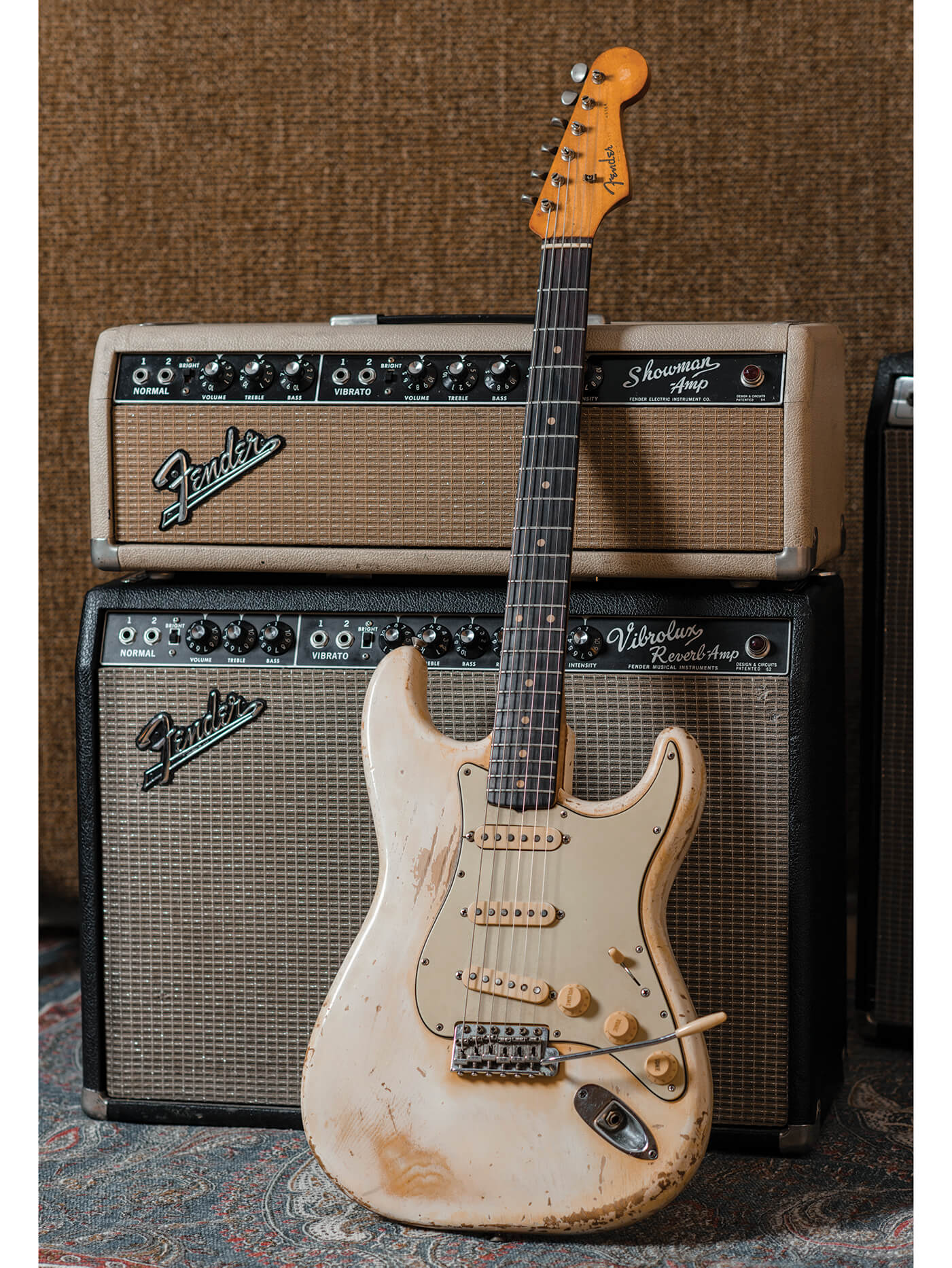
Mark’s preference for Stratocasters goes all the way back to the beginning of his career. “I kept the Columbus for about a year and then my grandmother gave me the money to buy a Japanese Strat – a ’57 reissue from Gamlin’s Music Centre that I still have. I wanted one because of Mark Knopfler, but then I was blown away by Eric Clapton the first time I saw him.
“I started buying Clapton albums, which got me into Cream and then the John Mayall album, which took me further into the blues. Hendrix and Stevie Ray came later, and it was frightening listening to Stevie at first! I sort of came at it the opposite way to most people, because I was already listening to all the older blues guys and struggling to play like them, then suddenly, there was this younger guy playing that stuff at 100 miles per hour. I was an SRV freak for a while, but I make a conscious effort not to be, because there were so many others… and there still are. I’ve tried to develop my own thing.”

It’s fair to say Mark used to be a very loud player, but lately, he’s developed an appreciation for lower-powered amps.
“It was mostly because of sound engineers hassling me at gigs,” Mark says, with a rueful smile. “I used to use a 4×12 with my ’69 Marshall 100-watt Super Bass, which was my first vintage amp. We did a festival supporting Albert Lee and the sound guys just didn’t want to know. I felt hampered by having to turn down so low, because Marshalls don’t really work when you do that. I tried an attenuator, but the Super Bass would melt its solder joints. I went down to a 2×12. Then I tried a Super Reverb and that was too loud, but I noticed how good it sounded just plugging in – and that sparked my interest in older Fender amps.
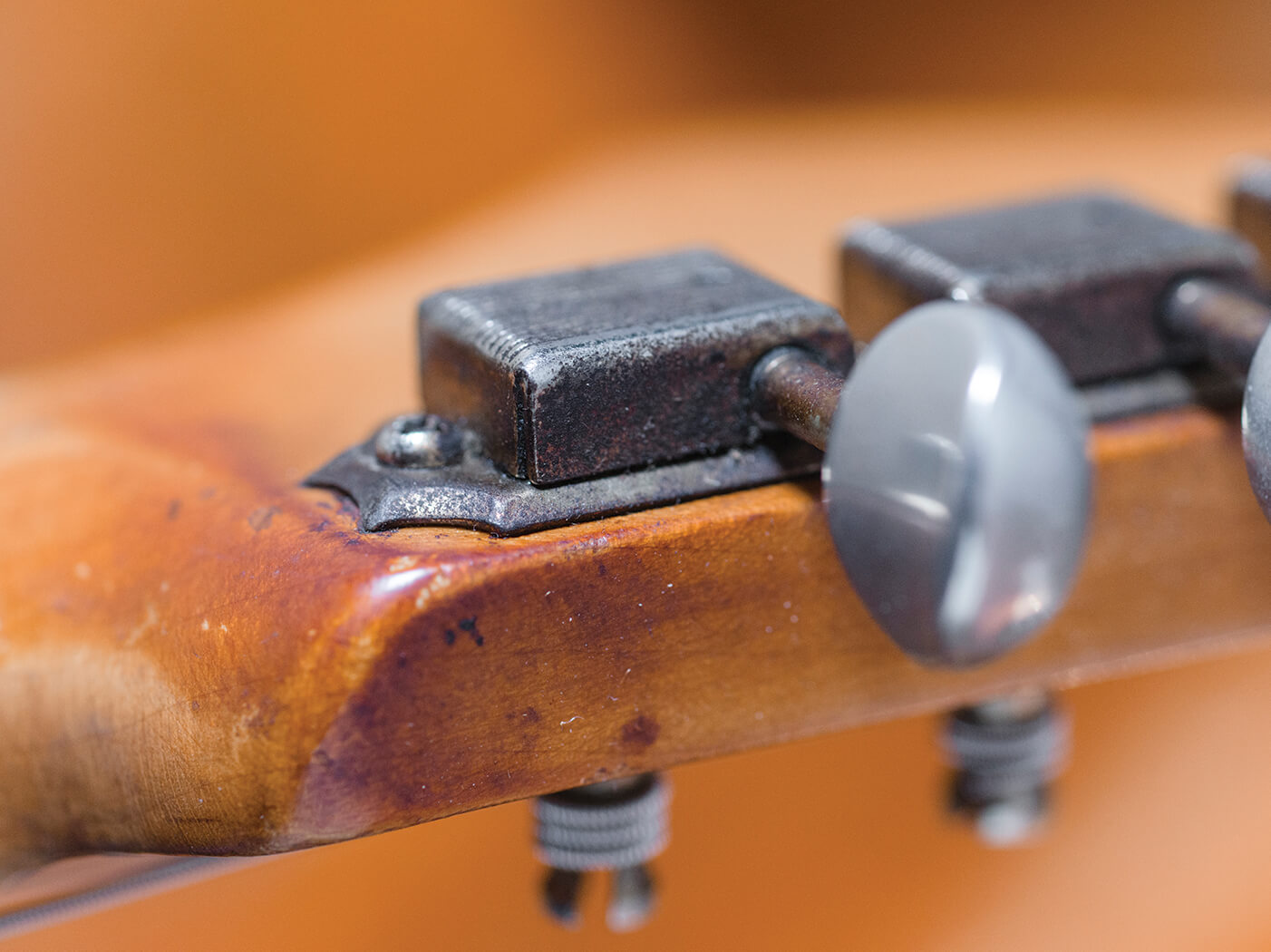
“I’ll still use a 40-watt amp in a smaller venue, and I use my Two-Rock Custom Reverb Signature on the half-power setting with a 1×12 with a Plexiglass screen in front. I don’t often use my ’66 Princeton or ’58 tweed Deluxe live with my band, because the compression in the amps is too much for me to hit them with overdrives and boosts. My clean sound is always just the amp and if I crank some of the smaller amps to hear them over the drums, there’s no headroom left for a lead tone. However, I do use them with my wife Ayesha’s band, because we play quieter and it has more of a country/Americana feel, with reverb and tremolo, and no fuzz pedals.
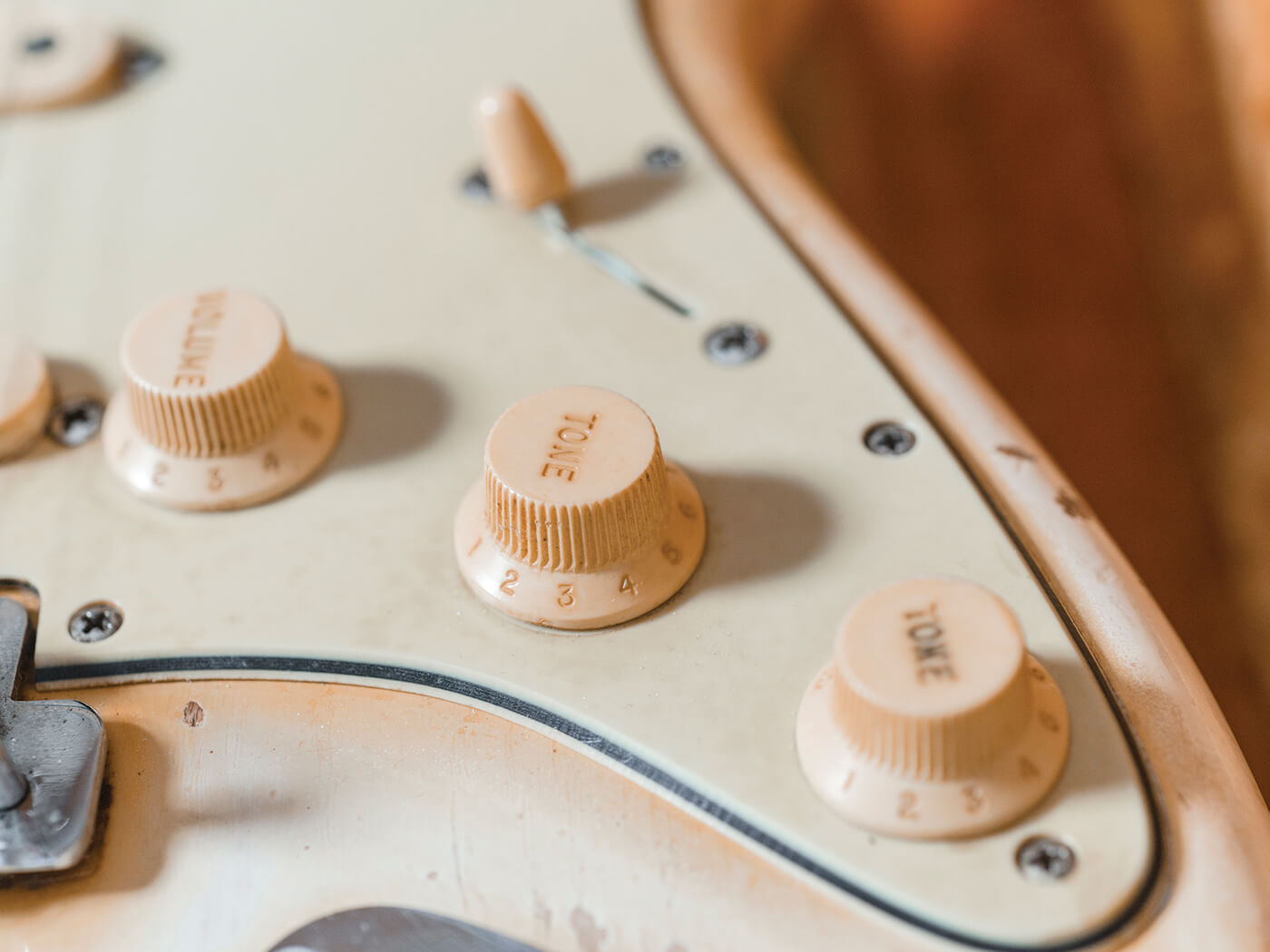
“Recently, I bought a handwired Deluxe Reverb and that was a revelation, because it has enough headroom to do smallish gigs and mic’d-up bigger gigs, and it doesn’t compress like sub-20-watt amps. It makes them more like mini Marshalls, but with Fender glassiness and the reverb. I never used to use reverb, but now I use it all the time. If I’m playing an amp without reverb, I’ll use my Strymon Flint. Of all my amps, the Princeton has the sweetest sound and if I’m playing in a duo, it’ll be just that amp with an OCD pedal. Even then, I’ll barely use the OCD, because the Princeton has more than enough sustain to solo.
“My Pro Reverb sounded terrible until I changed the speakers. The originals couldn’t handle the low end, so I put Scumbacks in there and now it’s great. The Blackface Showman has a lovely warm clean sound, but I’m really looking for an old Deluxe Reverb.”
Ageing gracefully
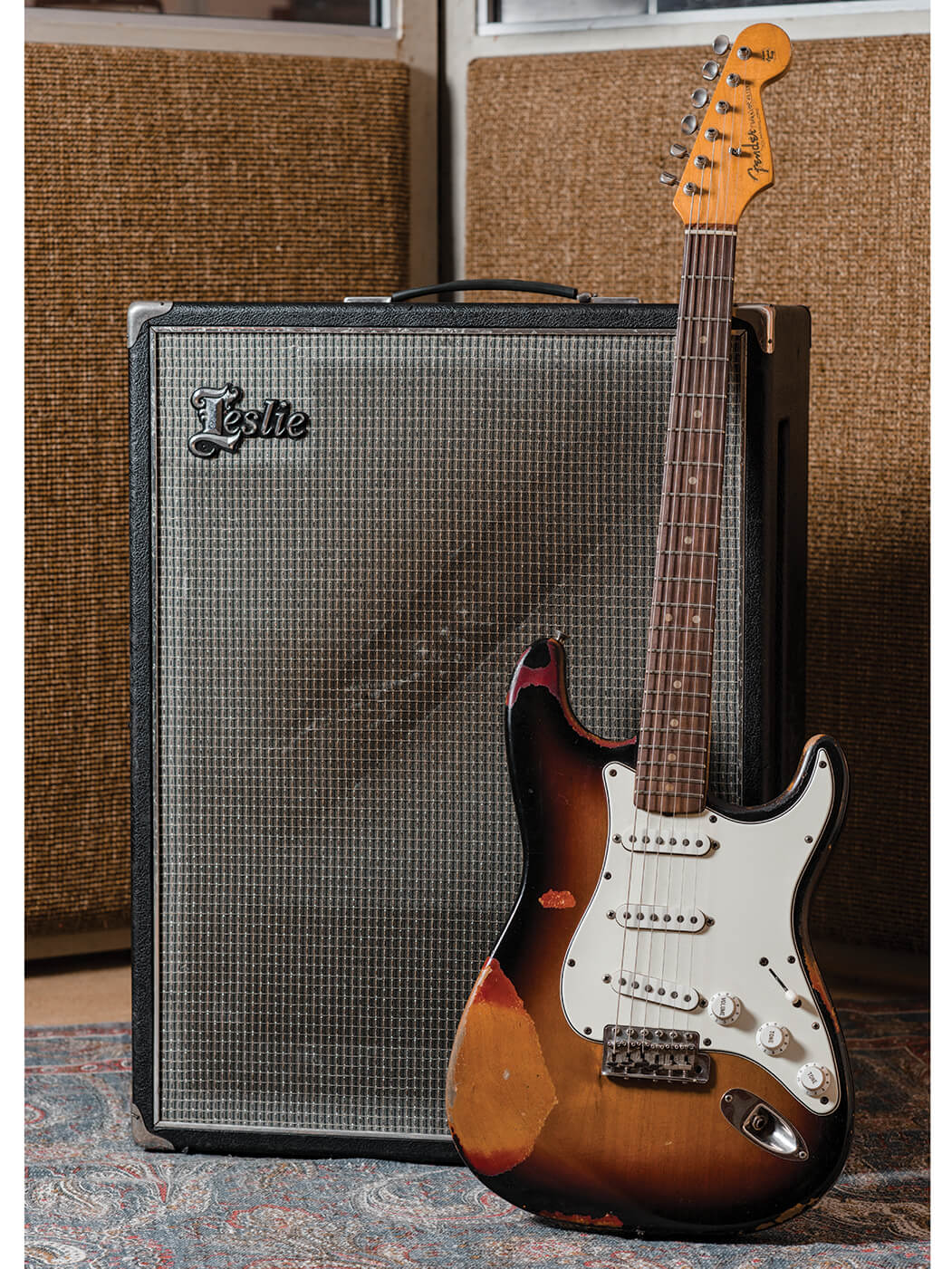
Mark only started playing vintage guitars quite recently, but his interest in them, and in older amps and pedals, goes way back. “I guess it was because of the players I was into and reading about vintage guitars in magazines,” he suggests. “I always liked the look of early-60s Fenders with the green ’guards and the way they aged. A guy in college had an early-60s one that he let me play and I just got a feeling from it. I’ve never had that from any new ones. At a couple of points, I’d been able to buy one but didn’t, and I regretted it. I’d bought a lot of reissues and amplifiers and I realised that all the money I’d spent could have got me a vintage Strat. Also, at the time, I didn’t feel I deserved one, like I wasn’t ready.
“My first vintage guitar was my ’65 Strat and when I went up to try it at ATB [Guitars, in Cheltenham], it just had some mojo about it. It’s my main guitar and it’s starting to wear from my playing, so I’m putting my story onto it.
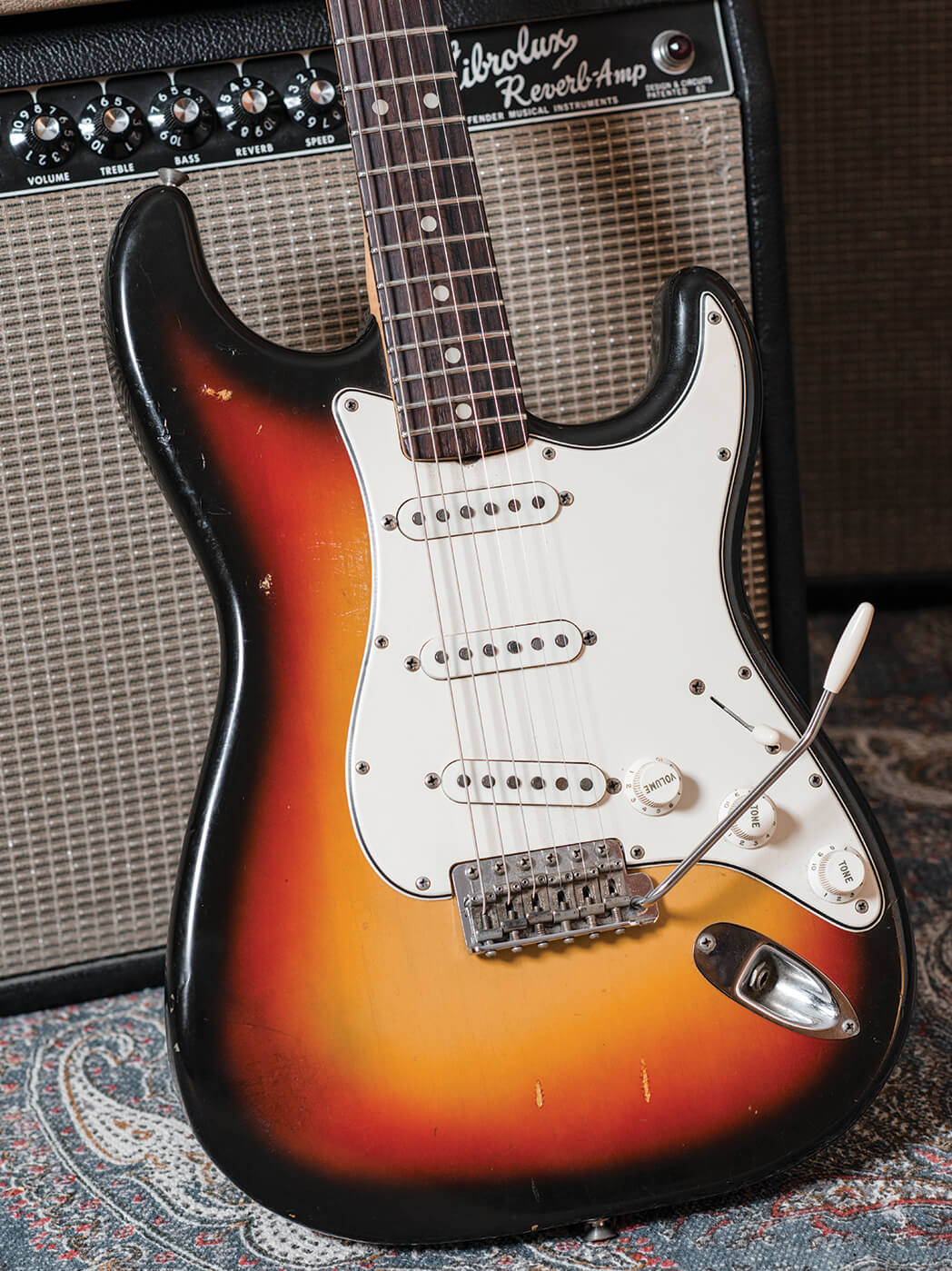
“It’s a similar story with my ’61 Blonde one. I went back to ATB Guitars and Mike Long put several out for me. It was the first one I tried and I didn’t bother with any of the others, although the finish was yellowed up. Each time I gigged it, my arm would be yellow from nicotine stains and I’d smell like I did before the smoking ban! I wanted to enjoy playing it, so I gently wiped it with lighter fluid and it cleaned up easily.
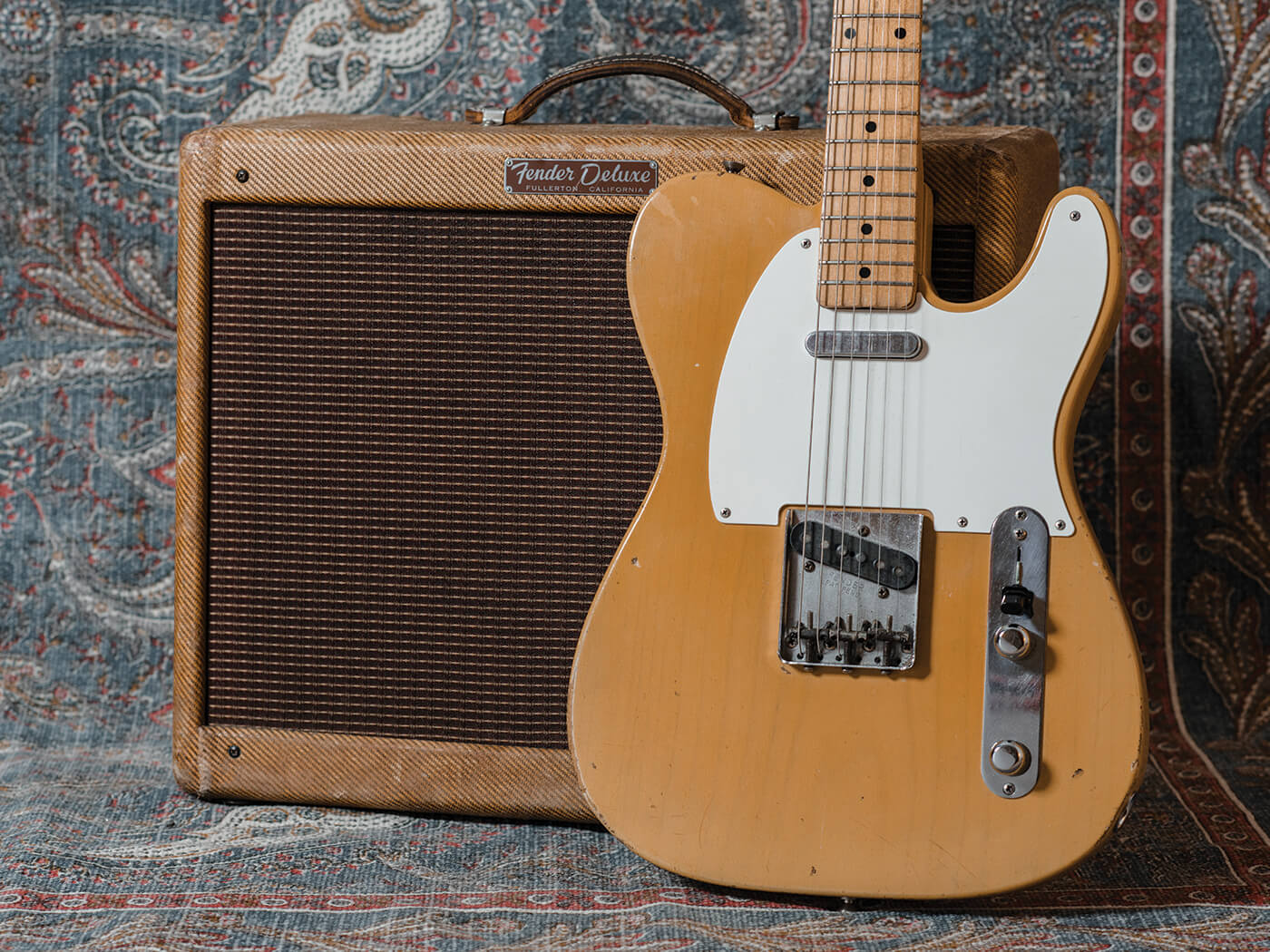
“Vintage guitars are an inspiration, and they help me create and make me try to play better. The only downside is the attention it’s drawn towards me. It’s like people think I’m a millionaire, but it’s taken me decades to trade up to these guitars and amps,” Mark points out. “Sometimes, I sense a bit of jealousy, but for me, it’s the fulfilment of a dream and I also see it as a marketing tool to arouse interest in my music and an investment for when I reach pensionable age that I can enjoy in the interim.”
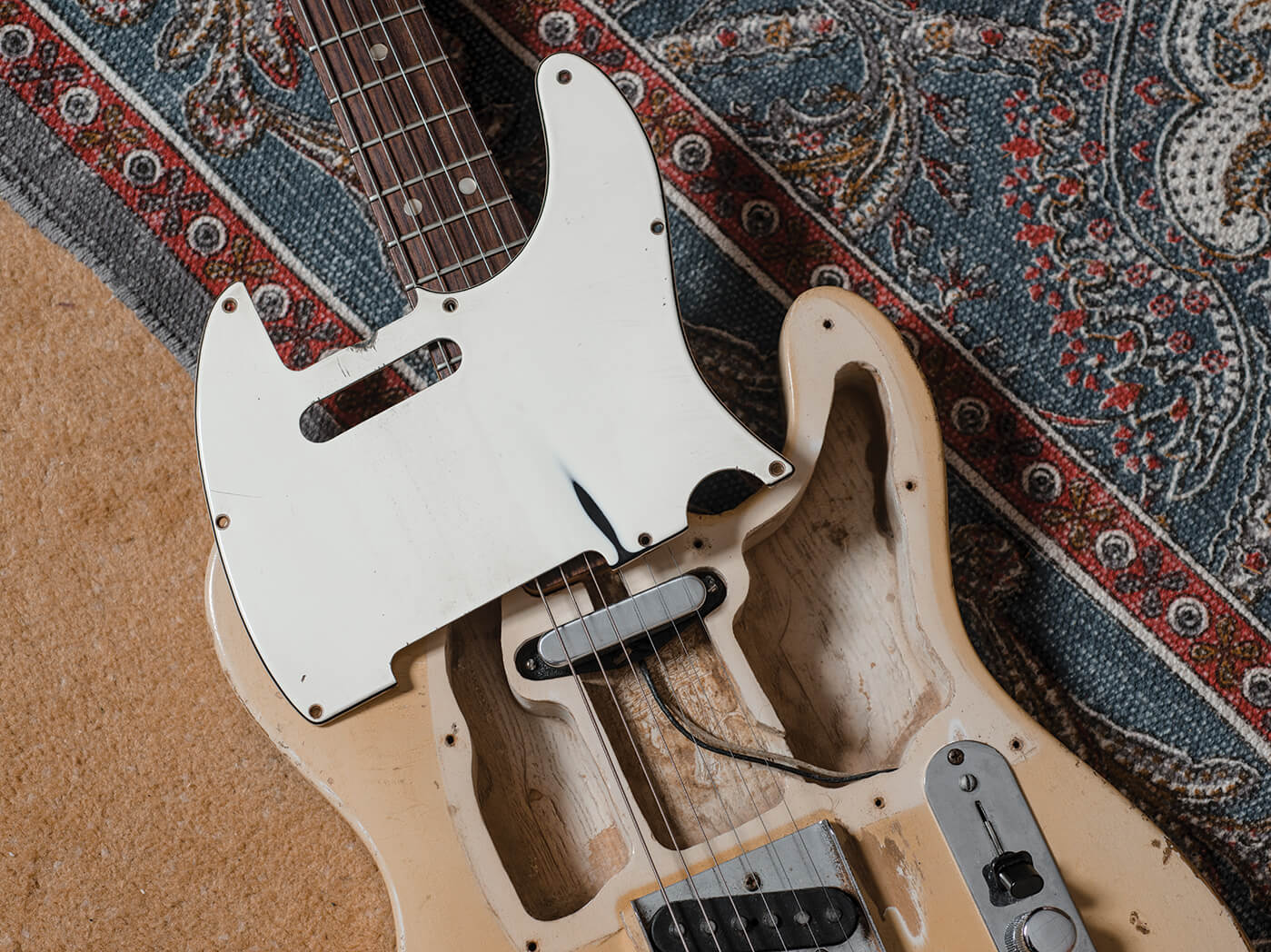
Mark admits to owning way too many pedals, and there are a few vintage gems among the modern-boutique stuff. “It took me a long time to find a Uni-Vibe without paying a fortune, but it’s not really practical to gig with one. It’s so noisy, but it sounds fantastic. I have a couple of vintage wahs, too: a V846 that sounds great for the White Room thing and a Jen Cry Baby that has the same circuit but with a ‘trash can’ inductor, rather than a TDK Fasel copy, so it sounds more Shaft.”
Transatlantic tones
British amps have long featured in Mark’s backline, and there have been a couple of lucky finds. “Someone I knew mentioned that someone was getting rid of an AC30 and asked if I wanted to go and look at it. It was in his shed with a Flymo leaning up against it, but fortunately, it was pretty dry in there. He heaved it out, plugged it in and it didn’t work. So he told me to come back after his mate had looked at it and, because he was a fan of my music, he gave me a great deal.
“It’s a ’63 with [Celestion] Blues and it didn’t need much doing to it. The Marshall P.A. 20 was another bargain. I was playing in a bar in Barry and this guy came up and said: ‘I’ve got just the amp for you.’ I didn’t know what a P.A. 20 was at the time, but I tried it and it sounded great. He wanted stupid money, so I turned him down, but then every few months, he’d call me back with a lower price. It got to Christmas one year and we reached a deal. I’ve used it a lot, because you get classic Plexi tone at 20 watts.”
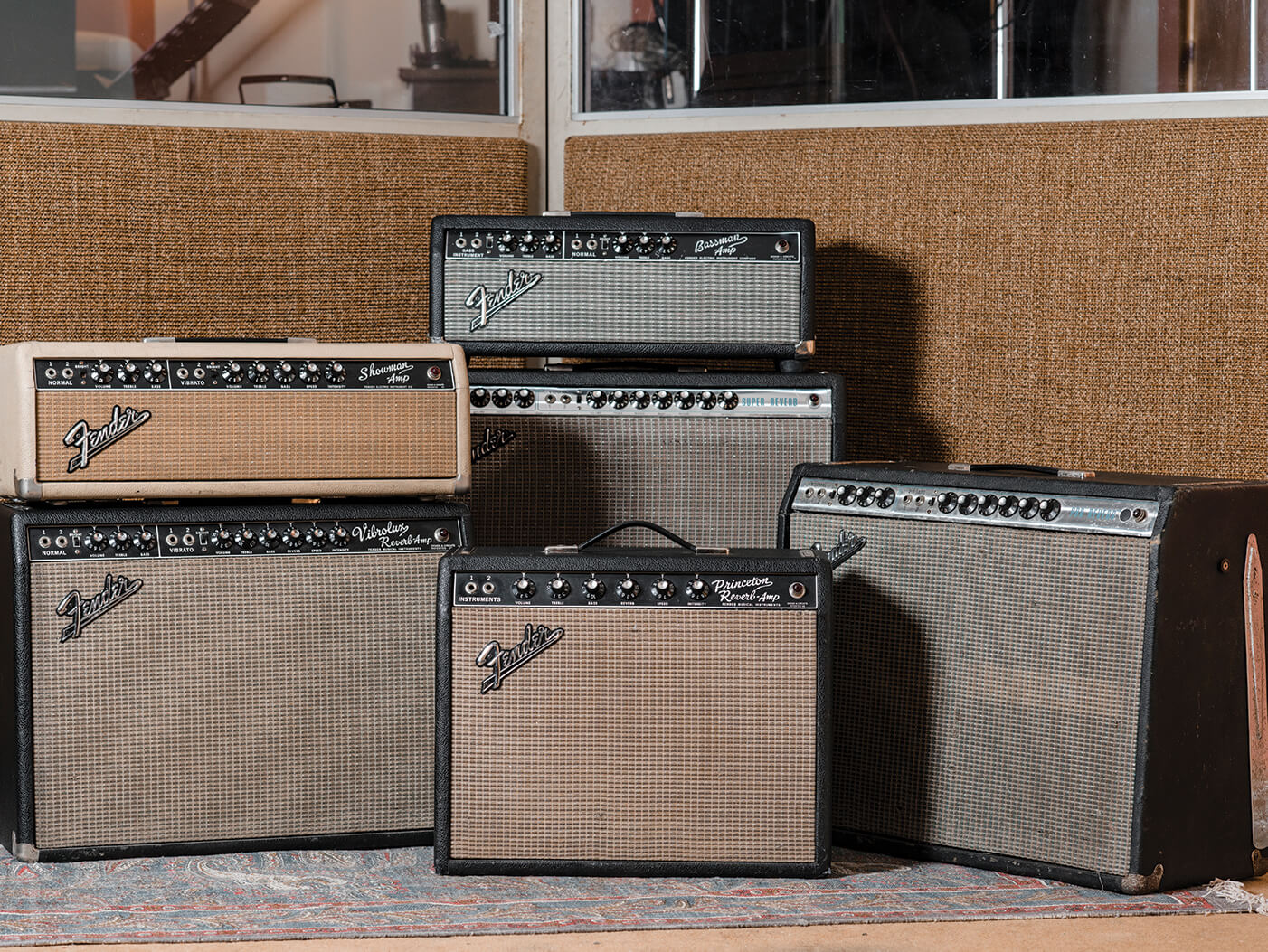
Although primarily a Strat player, Mark also has a soft spot for Telecasters. “My ’56 Tele has a Clive Brown refin and there’s a really big neck on it. It’s a little bit heavy, but loads were back then. It’s not the sweetest-sounding guitar unplugged, but when you plug it in, it sounds like that era. I don’t know if it’s a keeper yet, because I don’t find myself drawn to it like the 60s ones.
“I play my ’67 Smuggler’s Tele the most. The ’63 Dakota Red’s frets are too low for me at the moment, but that bridge pickup is something else. It has a vibe to it and once I get it refretted, I think that will be my number-one Tele. My blonde ’64 has been refretted and it’s a lovely guitar – but I’m still working on the setup and it’s too microphonic to use live with fuzz pedals.”
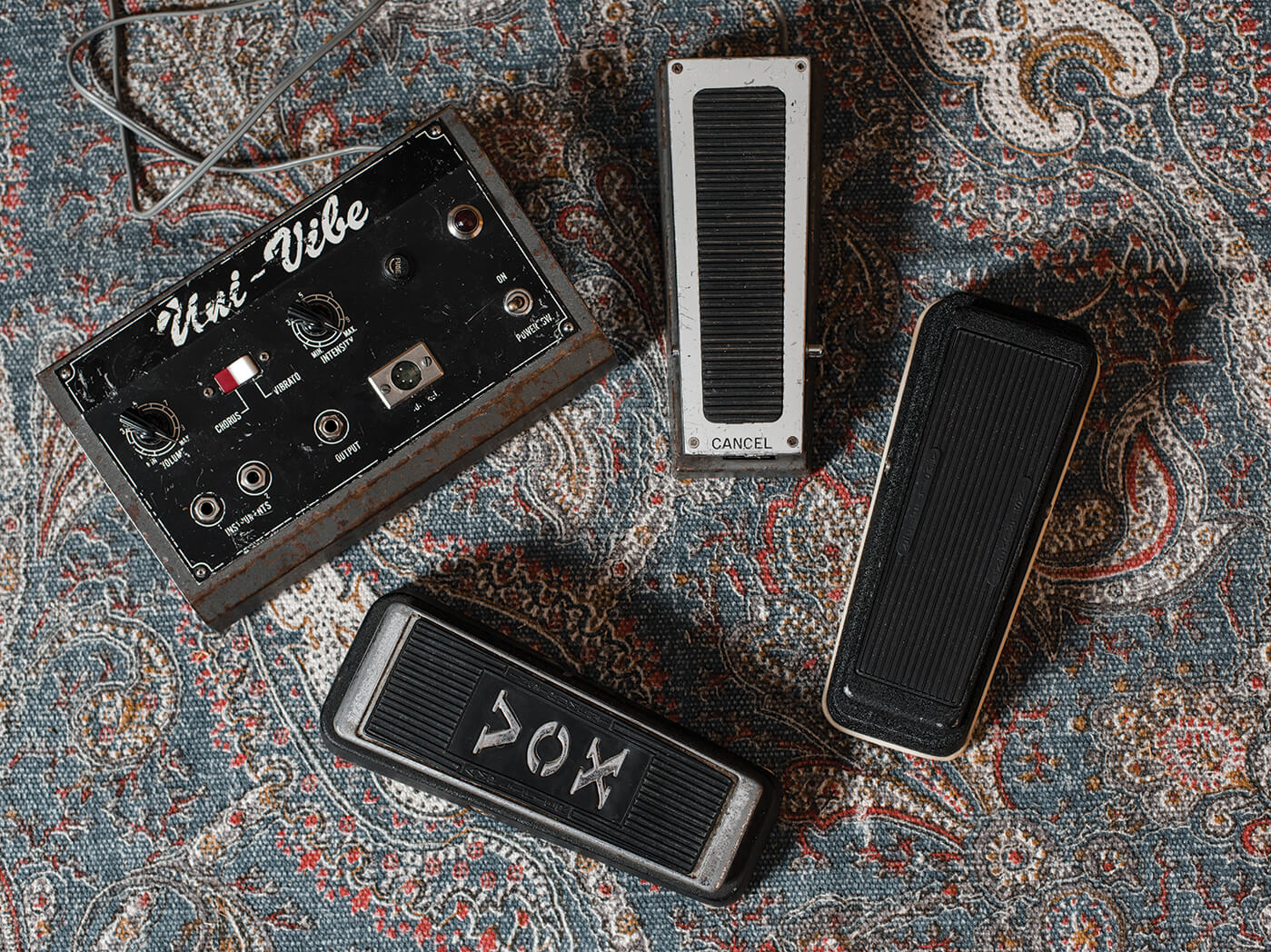
Mark has a few modern Gibsons, too, but they’re used more for recording than gigging. “I always feel like SGs are fragile, and I end up babying them because they all have tuning problems. I use SGs in the studio a lot for big riffs, but more on other people’s sessions than mine. Whenever I’m asked to do a session, I’ll take a Strat, Tele and an SG.”
On the record
Over the last few months, Mark has been working on a new album and he sees it as a progression from his earlier work. “Over the last decade, my focus has been more on writing songs and developing as a singer.”
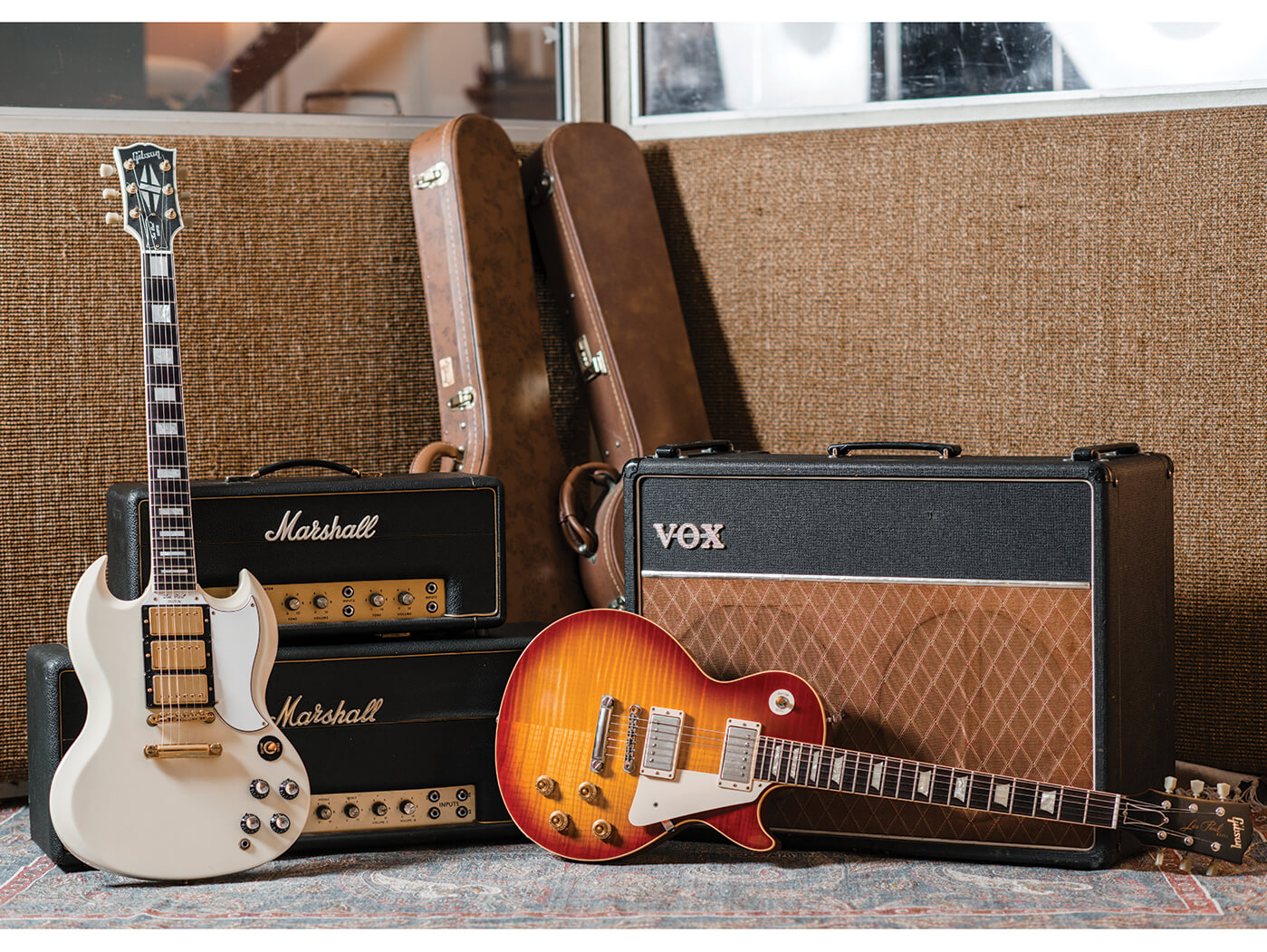
“I did the ‘big guitar’ thing on my first album and although the second album is more song orientated, there’s still loads of guitar. This new one is more about expressing myself as an artist, rather than just a guitarist. It has real strings and brass, and I wrote all the parts, so it’s more eclectic, with a bit of soul and funk. I’ve used all vintage gear on the recordings, apart from one track where I played my Two-Rock. One of my favourite tones was when I put the ’56 Tele through the ’58 Deluxe and the ’66 Princeton Reverb and just turned them up. I even had some vibrato on the Princeton and that was just perfect.
“The new album will be called Kaleidoscope, basically because it’s all different flavours. It will be out around late April 2019 and I’ll be touring to promote it.”
If you want to hear Mark’s vintage gear in action, visit markpontingroup.com and ayeshapontin.com.
Check out more shots of Mark’s collection here:


